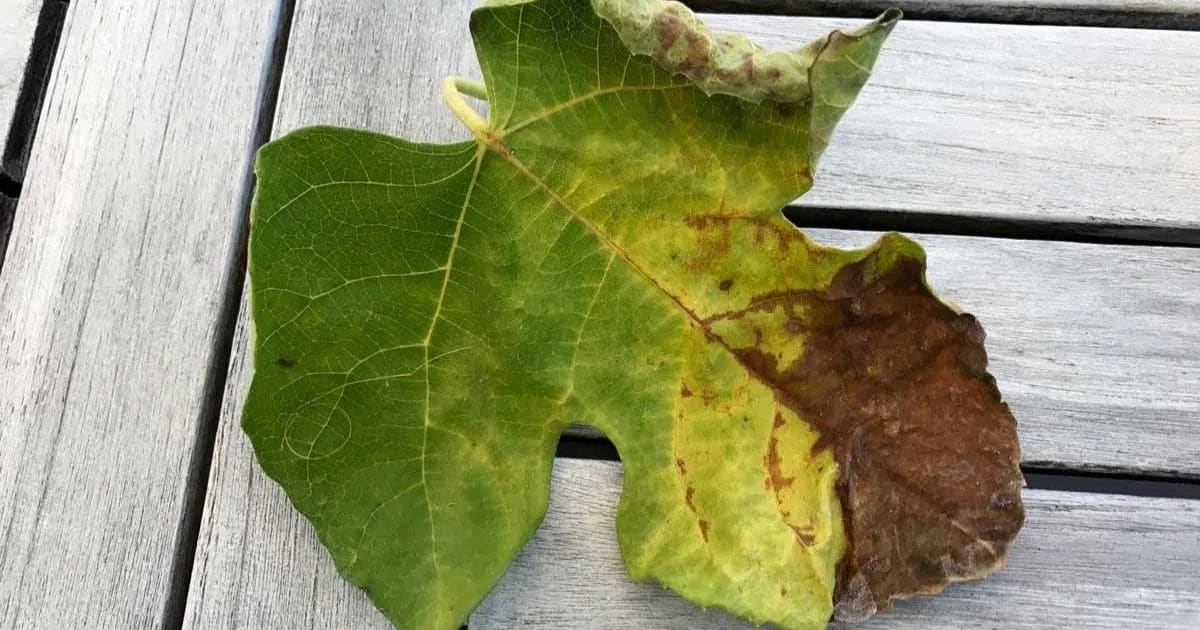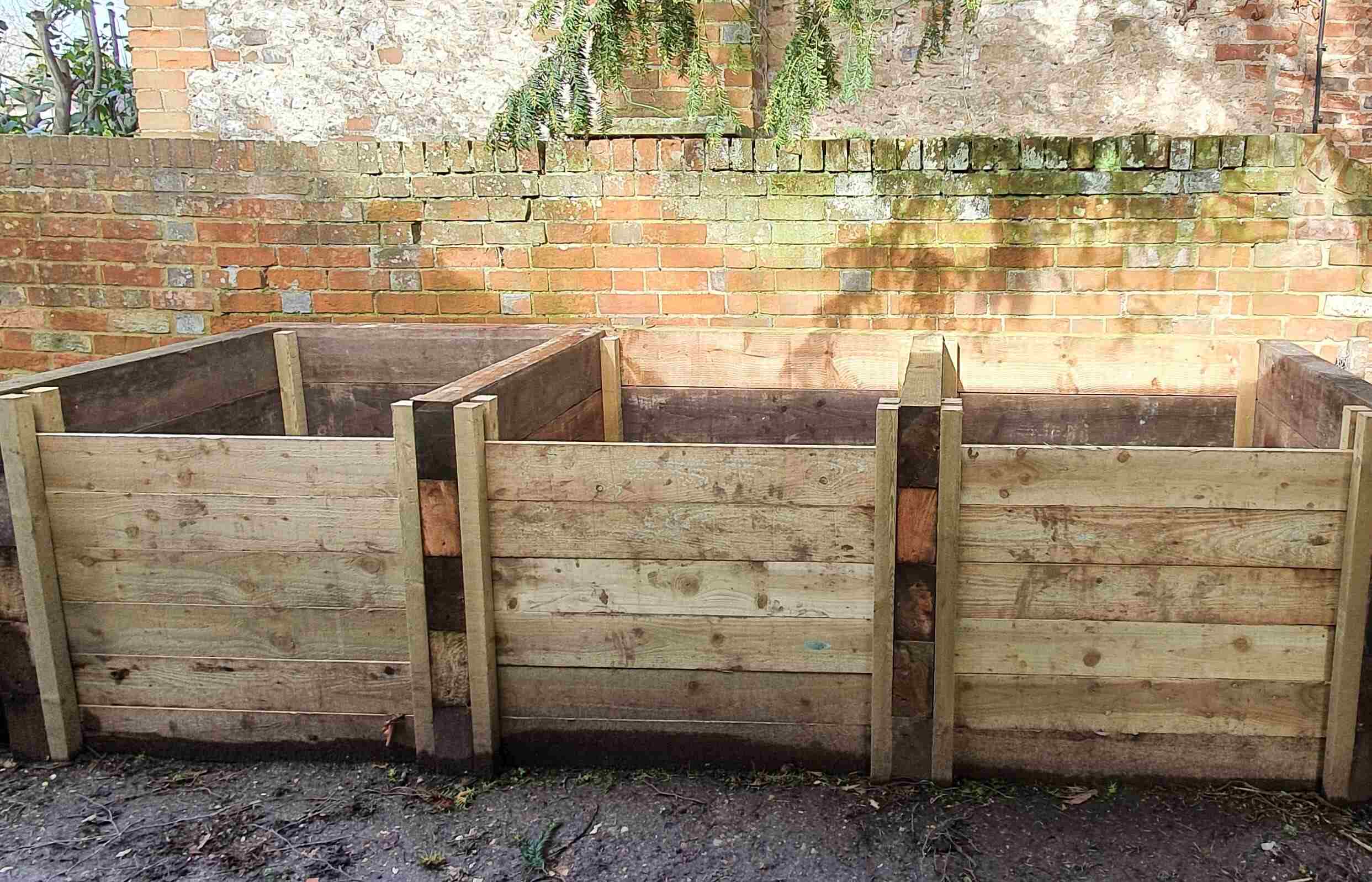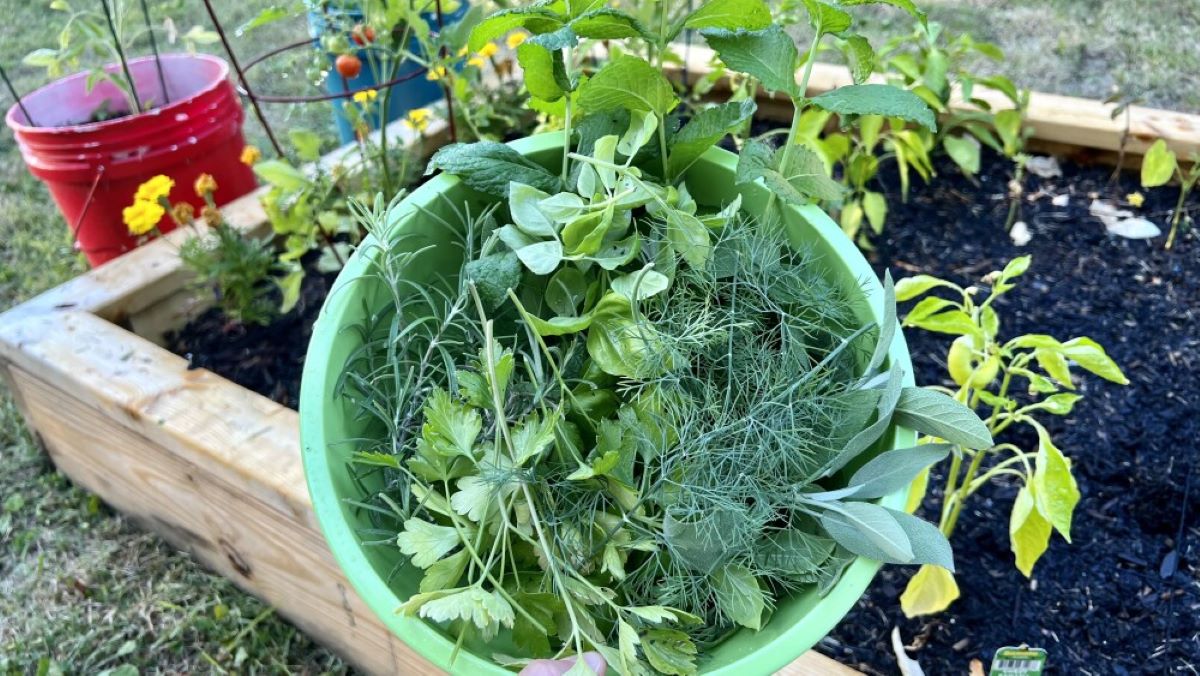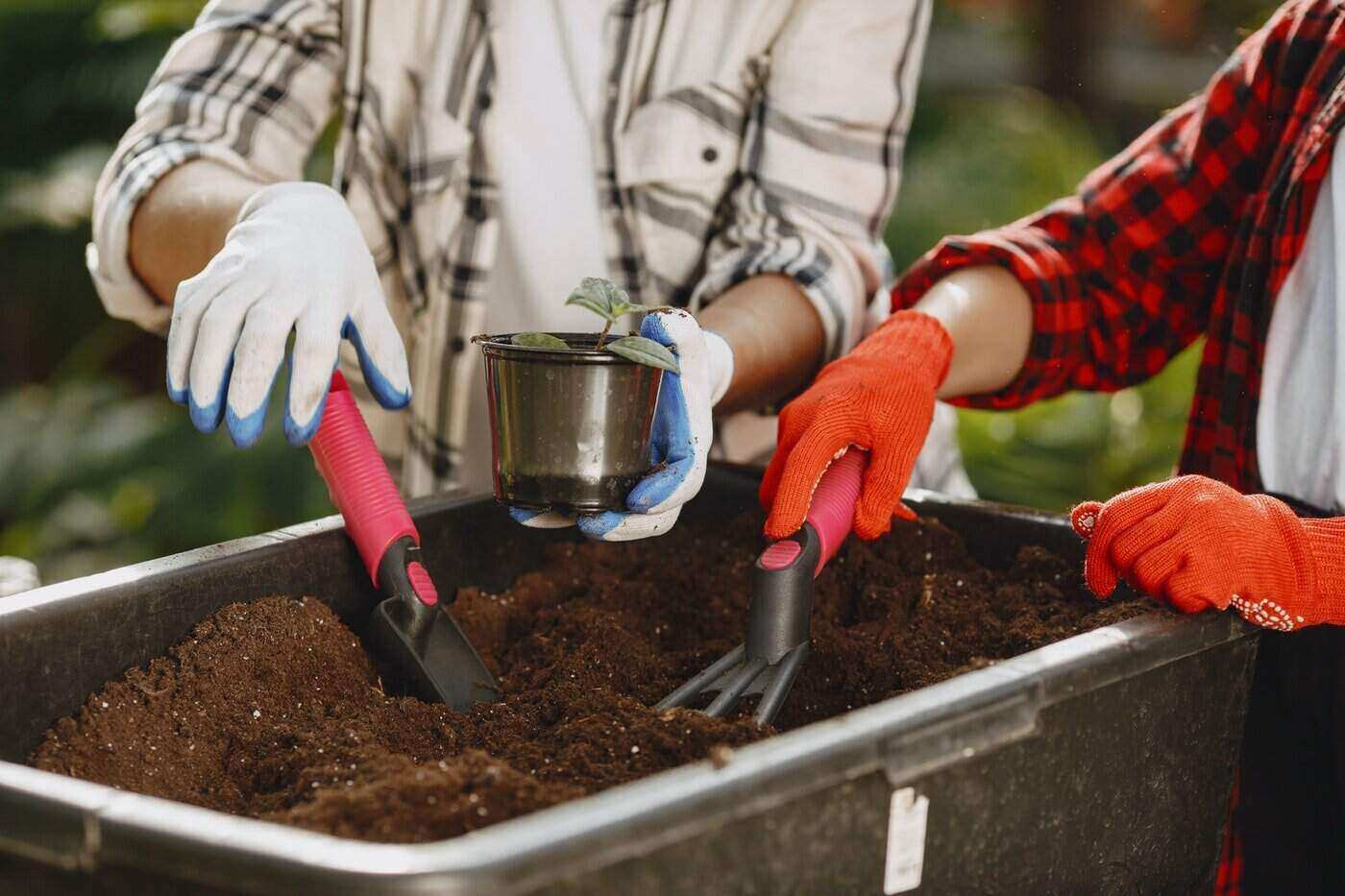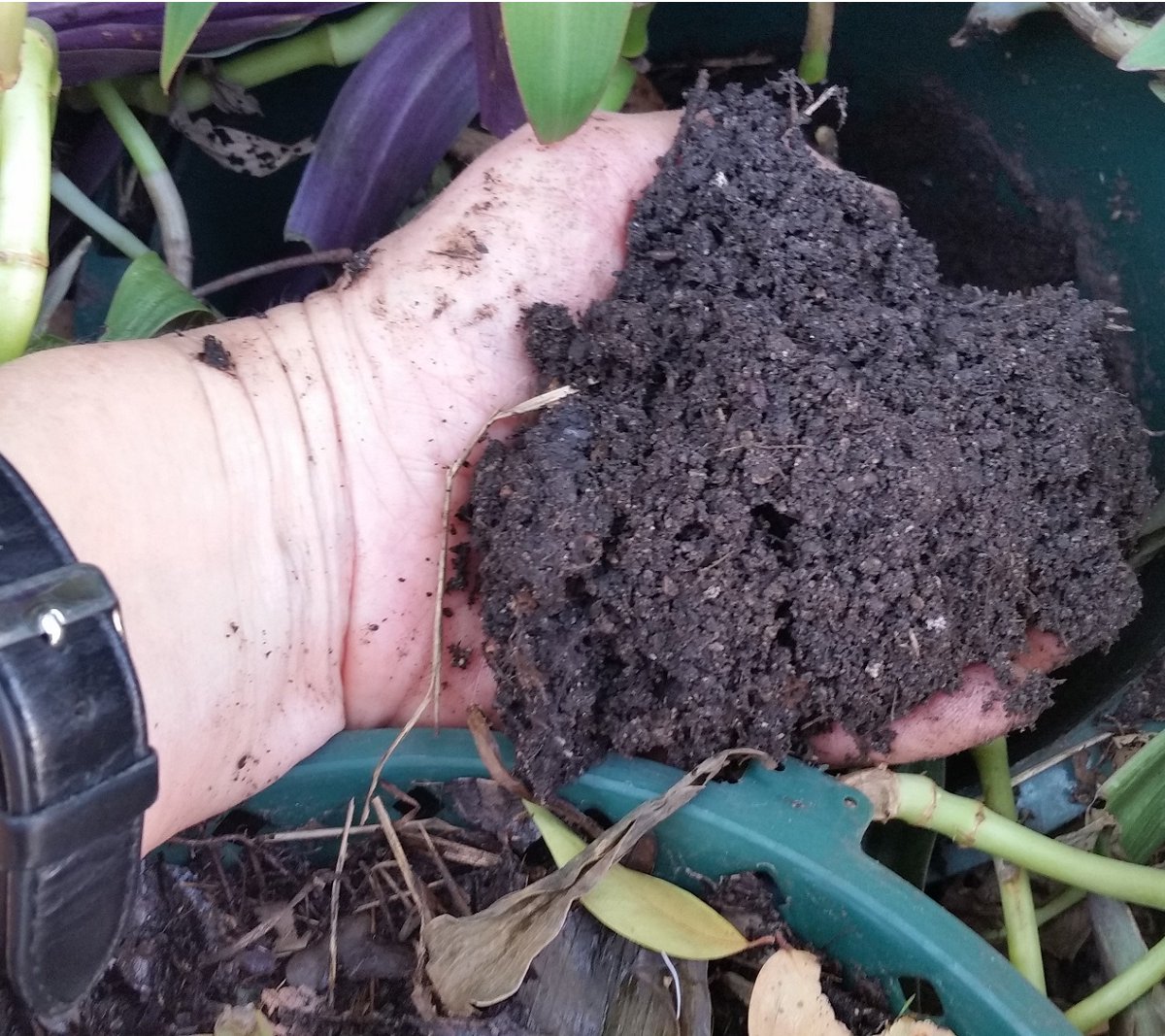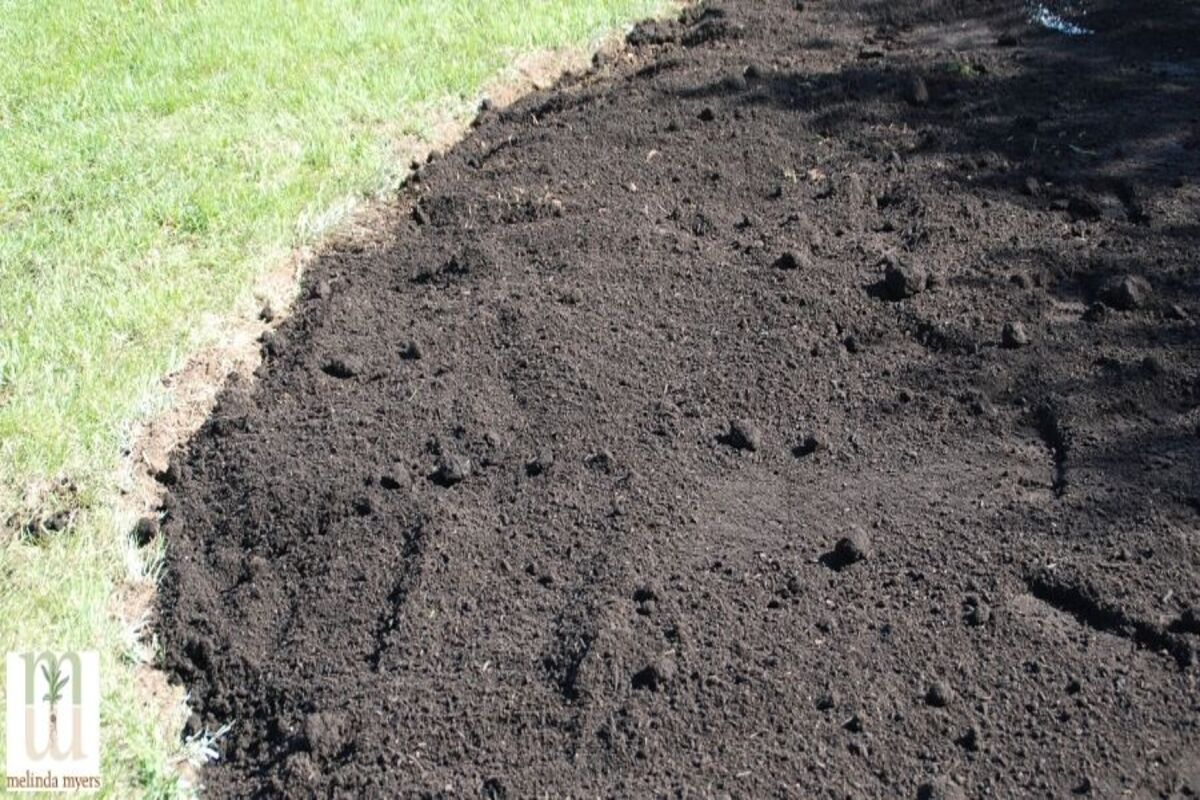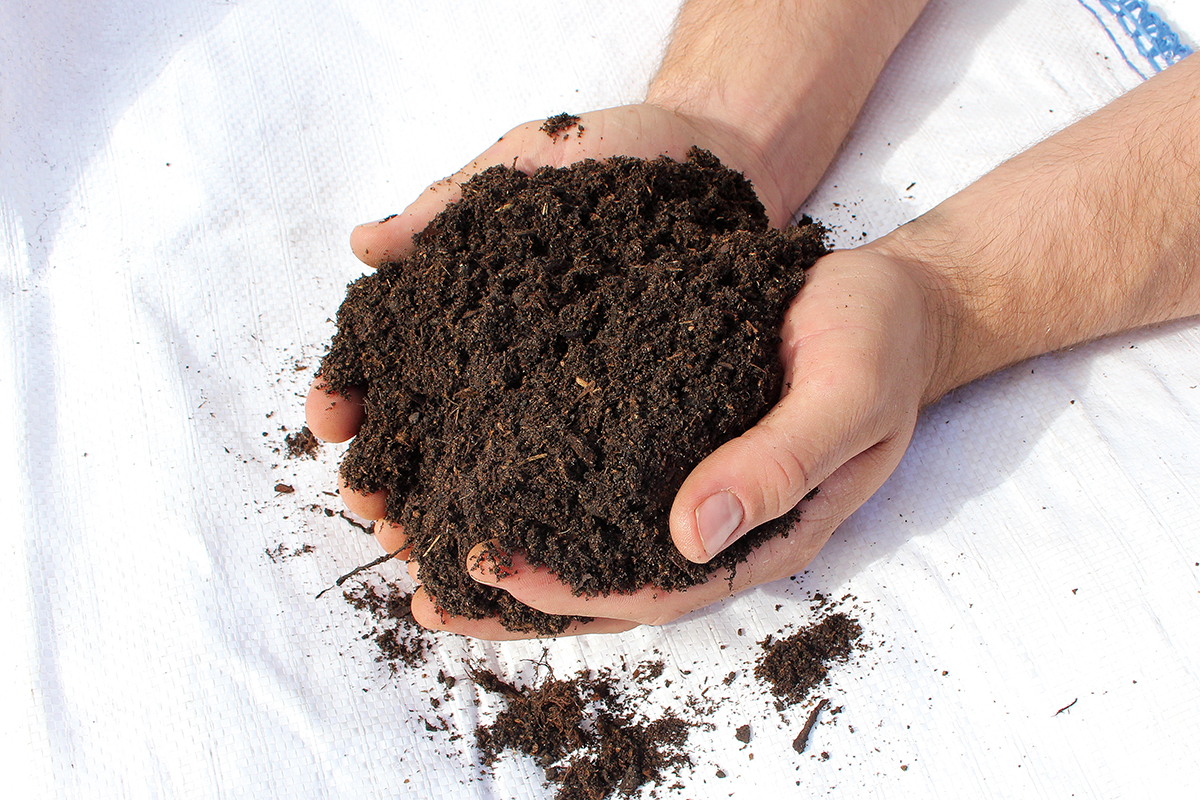Home>Gardening Tips and Tricks>Problem Solving>What To Do If Compost Is Too Wet
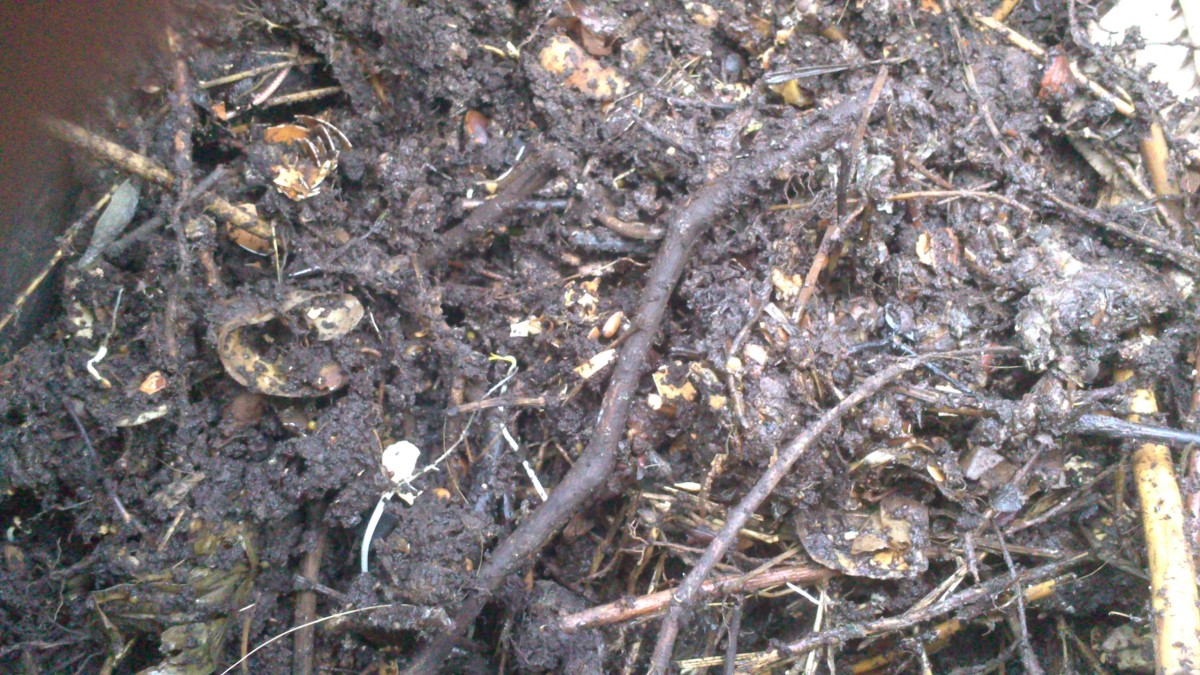

Problem Solving
What To Do If Compost Is Too Wet
Modified: January 22, 2024
Find solutions for your wet compost problem with our comprehensive guide. Learn effective methods for problem-solving and maintaining a healthy compost pile.
(Many of the links in this article redirect to a specific reviewed product. Your purchase of these products through affiliate links helps to generate commission for Chicagolandgardening.com, at no extra cost. Learn more)
Table of Contents
- Introduction
- Reasons for Wet Compost
- Effects of Excess Moisture on Compost
- Assessing the Moisture Level of Compost
- Techniques to Reduce Excess Moisture
- Turning or Mixing the Compost
- Adding Dry Materials
- Covering the Compost Pile
- Creating Drainage for the Compost
- Using a Compost Bin with a Bottom Drainage
- Conclusion
Introduction
Composting is a popular and environmentally friendly way to reduce waste and create nutrient-rich soil for gardening. However, sometimes compost can become too wet, which can lead to a host of problems. Excess moisture in compost can hinder the breakdown of organic matter, create unpleasant odors, and attract pests. It’s important to address this issue promptly to ensure that your composting process is efficient and effective.
In this article, we will explore the reasons behind wet compost, the effects of excess moisture on the composting process, and practical steps you can take to reduce moisture levels in your compost pile. Whether you are a seasoned composter or just starting out, these tips will help you maintain the ideal conditions for successful composting.
So, if you find yourself faced with a soggy compost pile, don’t worry. With a little knowledge and some simple techniques, you can quickly remedy the situation and get your compost back on track.
Reasons for Wet Compost
There are several reasons why your compost may become too wet. Understanding these causes can help you identify and address the issue effectively.
1. Overwatering: One common reason for wet compost is excessive watering. If you add too much water to your compost pile or bin, it can become saturated. This can occur when you add wet kitchen scraps or garden waste without balancing them with enough dry materials.
2. Heavy Rainfall: Natural weather conditions, such as heavy rainfall, can also contribute to wet compost. If your compost pile is exposed to excessive rainwater, it can result in an overly wet environment.
3. Lack of Drainage: Another reason for wet compost is inadequate drainage. If your compost pile doesn’t have proper drainage or is located in a low-lying area with poor water flow, moisture can accumulate and make the compost excessively wet.
4. Compactness: Dense and compacted compost can trap moisture, preventing proper airflow and water drainage. This can lead to a wet and compacted pile that is difficult to break down.
It’s essential to understand the reasons for wet compost because it will guide you in implementing the appropriate solutions to address the issue. By identifying the cause, you can take the necessary steps to prevent your compost pile from becoming excessively wet in the future.
Effects of Excess Moisture on Compost
Excess moisture in compost can have a negative impact on the composting process and the quality of the final product. Understanding these effects can help you recognize the importance of maintaining the correct moisture levels in your compost pile.
1. Slow Decomposition: Wet compost tends to decompose at a slower rate compared to well-aerated and balanced compost. The excess moisture creates an environment lacking in oxygen, which hinders the activity of beneficial microorganisms responsible for breaking down organic matter. As a result, the decomposition process slows down.
2. Foul Odors: When compost becomes too wet, it can lead to anaerobic conditions, causing the growth of foul-smelling bacteria. This can result in an unpleasant odor emanating from the compost pile. Not only is this unpleasant for you and your neighbors, but it also indicates that the composting process is not functioning optimally.
3. Nutrient Loss: Excess moisture can cause essential nutrients, such as nitrogen, to leach out of the compost pile. This nutrient loss can significantly impact the quality of the compost, making it less beneficial as a soil amendment for your plants.
4. Pest Infestation: Wet compost provides an attractive habitat for pests such as slugs, snails, and insects. These pests can disrupt the composting process and may spread diseases to your plants when you eventually use the compost in your garden.
5. Weed Seed Survival: Wet compost can enhance the survival of weed seeds, leading to an increase in weed growth when you apply the compost to your garden. This can result in additional work and effort to remove unwanted weeds.
Understanding the negative effects of excess moisture on compost underscores the importance of maintaining proper moisture levels. By preventing your compost from becoming too wet, you can ensure a faster breakdown of materials, produce nutrient-rich compost, and minimize the risk of pest infestation and weed growth.
Assessing the Moisture Level of Compost
Before taking any steps to address excess moisture in your compost, it’s crucial to assess the moisture level accurately. This will help you determine the severity of the issue and guide you in implementing the appropriate solutions.
There are several methods you can use to assess the moisture level of your compost:
1. Visual Inspection: Start by visually examining the compost pile. Wet compost will appear dark, clumpy, and heavy. It may have a slimy or matted texture. On the other hand, well-aerated compost will have a crumbly and loose consistency.
2. Squeeze Test: Take a handful of compost from different areas of the pile and squeeze it tightly in your hand. If water drips out or you can wring out the compost like a sponge, it’s too wet. If the compost holds its shape without excess water, it is at an ideal moisture level. If the compost crumbles and doesn’t hold its shape, it may be too dry.
Remember, the goal is to achieve moisture content that is similar to a damp sponge – moist but not overly wet. This will provide an optimal environment for decomposition to occur.
Regularly assessing the moisture level of your compost pile allows you to make necessary adjustments and maintain optimal conditions for successful composting. It’s an essential step in ensuring that your compost pile remains healthy and productive.
Techniques to Reduce Excess Moisture
If you find that your compost is too wet, don’t worry – there are several effective techniques you can employ to reduce the excess moisture and restore balance to your compost pile. Here are some practical solutions:
1. Turning or Mixing the Compost: One simple and effective way to address wet compost is to turn or mix the pile. This helps to aerate the compost, increase airflow, and promote evaporation of excess moisture. Use a garden fork or compost turning tool to carefully mix the wetter areas with drier ones. Aim to turn the compost pile every 1-2 weeks to maintain optimal moisture levels.
2. Adding Dry Materials: Dry, absorbent materials can help soak up excess moisture in the compost pile. Materials such as dry leaves, straw, shredded newspaper, or sawdust can be added in layers to absorb the excess moisture. Ensure a proper balance between wet and dry materials to achieve the desired moisture level. Mix the dry materials thoroughly into the wet compost to distribute moisture evenly.
3. Covering the Compost Pile: One way to prevent excessive moisture from accumulating in your compost pile is to cover it with a tarp or a compost cover. This helps to shield the pile from heavy rainfall or excessive watering, allowing the compost to dry out gradually. However, ensure that the covering is loose enough to allow for proper airflow.
4. Creating Drainage for the Compost: If your compost pile doesn’t have proper drainage, consider creating drainage holes or a layer of coarse materials at the bottom. This allows excess water to drain away and prevents it from being trapped in the pile. Ensure that the drainage holes do not obstruct airflow.
5. Using a Compost Bin with Bottom Drainage: If you are using a compost bin, consider utilizing a model that has a bottom drainage system. This allows excess moisture to drain out naturally, maintaining the ideal moisture level within the compost. These types of bins are especially useful in areas with high rainfall or for those who frequently add wet materials to the compost pile.
By implementing these techniques, you can effectively reduce excess moisture in your compost pile and create a well-balanced environment for decomposition. Regular monitoring and adjustments will help maintain optimal moisture levels for a healthy and productive composting process.
Turning or Mixing the Compost
One of the most effective techniques to address wet compost is to turn or mix the pile. Turning or mixing the compost helps to aerate the pile, increase airflow, and promote the evaporation of excess moisture. This simple yet powerful method can help restore balance to your compost pile and accelerate the decomposition process.
Here are some steps to effectively turn or mix your compost:
1. Choose the right time: Ideally, turn or mix your compost when it is moist but not overly wet. Avoid turning the compost when it is extremely wet, as this can lead to further compaction and hinder proper aeration.
2. Prepare the necessary tools: Use a garden fork, compost turner, or a shovel to turn and mix the compost pile. These tools make it easier to penetrate the pile and blend the materials together.
3. Start from the center: Begin by inserting the tool into the center of the compost pile and lift the materials upwards. This helps to bring the materials from the center to the outer edges, allowing for better aeration and moisture distribution.
4. Mix thoroughly: Continuously turn and mix the compost, breaking up any clumps or densely packed areas. Aim to mix all layers and incorporate any dry materials evenly throughout the pile. This ensures a consistent moisture balance and encourages the decomposition process.
5. Maintain a regular turning schedule: Depending on the size and composition of your compost pile, aim to turn it every 1-2 weeks. Regular turning helps to prevent the compaction of materials, improves oxygen circulation, and encourages the breakdown of organic matter.
6. Monitor moisture levels: As you turn or mix the compost, assess its moisture content. If the compost appears overly wet, consider adding dry materials, such as shredded leaves or straw, to absorb the excess moisture. Conversely, if the compost is too dry, add water to achieve the desired moisture level.
Turning or mixing your compost regularly not only reduces excess moisture but also helps to ensure that all materials decompose evenly. It promotes the growth of beneficial microorganisms and speeds up the breakdown process, resulting in nutrient-rich compost for your garden.
Remember, composting is a natural process, and turning or mixing the pile mimics the way it occurs in nature. By actively managing the moisture content through regular turning, you can create an optimal environment for the decomposition of organic matter and achieve successful composting.
Adding Dry Materials
When dealing with wet compost, one effective technique to reduce excess moisture is to add dry materials. Dry materials act as absorbents, helping to soak up the excess moisture and restore the balance within the compost pile. By incorporating a mix of dry and wet materials, you can create an ideal environment for decomposition to occur.
Here are some dry materials you can add to your compost pile:
- Dry leaves: Collect fallen leaves, allow them to dry out, and then shred or crumble them before adding to the compost. Leaves are rich in carbon and help to absorb excess moisture.
- Straw or hay: Straw or hay is another excellent option for adding dry materials. They provide structure to the compost pile while absorbing moisture.
- Shredded newspaper or cardboard: These materials not only help to absorb excess moisture but also provide carbon-rich content to the compost. Shred newspaper or cardboard into small pieces before adding them to the pile.
- Sawdust or wood shavings: As long as they are untreated, sawdust and wood shavings can effectively absorb moisture. However, be mindful of using excessive amounts, as they can alter the carbon-to-nitrogen ratio of the compost.
When adding dry materials to your compost pile, it’s important to maintain a proper balance between wet (nitrogen-rich) and dry (carbon-rich) materials. Aim for a ratio of roughly 25-30 parts carbon to 1 part nitrogen. This ensures a healthy composting process and prevents the pile from becoming too wet or too dry.
When incorporating dry materials, it’s advisable to mix them into the wet areas of the compost pile evenly. Layering the materials helps to distribute moisture and promote better aeration. As you add dry materials, periodically check the moisture level of the compost. Adjust the amount of dry materials as needed to reach the desired moisture level.
Adding dry materials to your compost pile not only helps to reduce excess moisture but also improves its overall structure. The added carbon-rich materials provide food for microorganisms, enhance the decomposition process, and create nutrient-dense compost for your plants.
Remember, composting is all about finding the right balance between wet and dry materials. By incorporating dry materials into your wet compost, you can create an ideal environment for efficient decomposition and successful composting.
Covering the Compost Pile
When dealing with wet compost, covering the compost pile can be an effective technique to prevent excessive moisture buildup. By providing a protective layer, you can shield the pile from excessive rainfall or watering, allowing it to dry out gradually and maintain the optimal moisture level.
Here are some tips for covering your compost pile:
- Choose an appropriate cover: Use a tarp, compost cover, or even a layer of burlap to cover the compost pile. Select a cover that is large enough to completely cover the pile and provide some overhang to protect it from rainwater.
- Loosen the cover: When placing the cover over the compost pile, ensure that it is loose enough to allow for proper airflow. This prevents the buildup of excess moisture and promotes adequate ventilation within the pile.
- Secure the edges: Secure the edges of the cover using rocks, bricks, or clips to prevent it from blowing away during strong winds. Make sure that the cover is tightly secured while still allowing for sufficient airflow.
- Monitor the moisture level: Regularly check the moisture level of your compost pile while it is covered. Lift the cover and assess the moisture content with a squeeze test. Adjust the cover or add dry materials if necessary to maintain the desired moisture balance.
- Remove the cover when needed: Depending on weather conditions and the moisture level of the compost, you may need to periodically remove the cover to allow for natural drying. Use your judgment and remove the cover when the pile is adequately dry or when it needs aeration.
Covering the compost pile is particularly beneficial in regions with high rainfall or when significant precipitation is expected. It helps to minimize the risk of excessive moisture seeping into the pile, which can lead to compaction and hinder the composting process.
Additionally, covering the compost pile can help retain heat, especially during colder months, promoting faster decomposition. It also prevents the loss of essential nutrients due to heavy rainfall or excessive watering.
Remember, while covering the compost pile can prevent excessive moisture accumulation, it is important to strike a balance. Proper ventilation and occasional exposure to air are essential for the composting process. Regularly monitor the moisture level and adjust the cover accordingly to maintain optimum conditions for decomposition.
By covering your compost pile, you can regulate moisture levels, protect it from external factors, and ultimately achieve a healthy and productive composting process.
Creating Drainage for the Compost
If you’re dealing with wet compost, one effective technique to address excess moisture is to create drainage within the compost pile. Adequate drainage helps to prevent water from accumulating and allows the excess moisture to escape, maintaining a balanced moisture level for optimal composting.
Here are some methods for creating drainage in your compost pile:
- 1. Add Coarse Materials: Start by adding a layer of coarse materials such as twigs, small branches, or straw at the bottom of your compost pile. This layer creates air pockets and encourages water to drain more effectively through the pile.
- 2. Build a Slope: Ensure that your compost pile is built on a slight slope or incline. This allows water to naturally flow away from the pile instead of pooling around it. A gentle slope helps to prevent excessive moisture from accumulating and promotes better drainage.
- 3. Create Air Pockets: As you build or turn your compost pile, intermittently insert a garden fork or a compost-turning tool into the pile. This technique creates air pockets that improve airflow and facilitate the drainage of excess moisture.
- 4. Use a Compost Bin with Holes: If you are using a compost bin, choose one that has holes or slots in the sides. These openings allow excess moisture to drain out, reducing the risk of water buildup in the compost pile.
- 5. Elevate the Compost Pile: If possible, place your compost pile on a platform or pallets to elevate it from the ground. This helps to improve drainage by allowing the water to flow freely beneath the pile.
By implementing these techniques, you can create an environment that promotes proper drainage within your compost pile. This is crucial in preventing excessive moisture from impeding the composting process and leading to unfavorable conditions, such as foul odors or the growth of unwanted pests.
Regularly monitor the moisture level of your compost pile to ensure that it remains adequately drained. Adjust the drainage techniques as necessary, especially after heavy rainfall or when you add particularly wet materials to the pile.
Remember, adequate drainage is essential for maintaining a healthy compost pile. By creating proper drainage, you can effectively manage excess moisture and create an environment that promotes optimal decomposition, resulting in nutrient-rich compost for your gardening needs.
Using a Compost Bin with a Bottom Drainage
When faced with the challenge of excess moisture in your compost, using a compost bin with a bottom drainage system can be a highly effective solution. These bins are specifically designed to facilitate proper drainage, allowing excess moisture to escape and maintaining the ideal moisture balance within the compost pile.
Here are some benefits of using a compost bin with bottom drainage:
- Efficient Drainage: Compost bins with bottom drainage systems have strategically placed holes or slots that allow excess moisture to drain out of the pile. This prevents water from accumulating within the bin, reducing the risk of a wet and saturated compost pile.
- Air Circulation: The bottom drainage system in these bins promotes better airflow throughout the compost pile. Adequate airflow helps prevent anaerobic conditions, allowing beneficial aerobic microorganisms to thrive and facilitate the decomposition process.
- Easier Moisture Control: With a bottom drainage system, moisture control becomes more manageable. You can adjust the drainage by simply monitoring the drainage holes and ensuring they are neither clogged nor obstructed. This allows you to maintain the ideal moisture level for efficient composting.
- Pest Prevention: By facilitating drainage, compost bins with bottom drainage systems help prevent the accumulation of excess moisture, which can attract pests such as gnats, flies, or worms. Maintaining proper moisture levels minimizes the risk of pest infestation in your compost pile.
When using a compost bin with bottom drainage, it’s important to follow these guidelines:
- 1. Position the bin on a well-drained surface: Place the compost bin on a surface that allows for proper drainage. Avoid placing it on low-lying areas prone to water pooling, as this can hinder the effectiveness of the drainage system.
- 2. Regularly monitor the drainage: Check the drainage holes or slots in the bottom of the bin to ensure they are clear and not blocked by compost material. Clear any obstructions to maintain a consistent drainage flow.
- 3. Adjust the moisture level: As with any composting method, it’s important to monitor and adjust the moisture level in the compost bin. Depending on the contents of the bin and weather conditions, you may need to add dry materials or water to maintain the desired moisture balance.
Utilizing a compost bin with a bottom drainage system provides a convenient and effective method for managing excess moisture in your compost pile. It helps maintain optimal moisture levels, enhances the decomposition process, and ensures that you have nutrient-rich compost for your gardening needs.
Remember to regularly maintain and inspect the drainage system of the compost bin to ensure its proper function. By using this type of bin, you can compost with confidence, knowing that excess moisture will be effectively managed.
Conclusion
Dealing with a wet compost pile can be a frustrating setback in your composting journey, but fortunately, there are practical solutions to address the issue. By understanding the reasons behind wet compost and the negative effects of excess moisture, you can take the necessary steps to maintain a healthy and productive composting process.
Assessing the moisture level of your compost is a crucial first step in determining the severity of the issue. Utilize visual inspection and the squeeze test to gauge the wetness of the pile accurately. From there, you can implement various techniques to reduce excess moisture, such as turning or mixing the compost, adding dry materials, covering the pile, creating drainage, or using a compost bin with bottom drainage.
Regular monitoring of your compost and adjusting as needed will help you maintain optimal moisture levels for successful decomposition. Remember to find the right balance between wet and dry materials, and provide proper aeration and drainage to create an environment conducive to the breakdown of organic matter.
With patience and diligence, you can turn your wet compost into a nutrient-rich soil amendment that will benefit your garden. By following these techniques and understanding how to manage moisture levels, you’ll be on your way to producing high-quality compost that will enhance your plants’ health and contribute to a sustainable gardening practice.
So, the next time you find yourself with a wet compost pile, don’t despair. Armed with the knowledge and techniques outlined in this article, you can confidently tackle the issue, restore the balance in your compost, and continue your composting journey with success.

